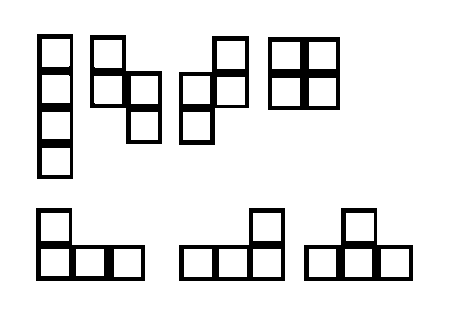TETRIS
 |
| The "Press Start" screen of Tetris. Note the obvious Russian influence from the building tops. |
Legality and History
The game also has a huge history with imitators and copies and it was a long time before Nintendo could buy the rights to the true original game created by Alexey Pajitnov – Thus leading Tetris to be the first commercial videogame to come out of The Soviet Union/ Russia.
Pjitnov’s original creation was first created on a Russian computer, the “Elektronika 60” in 1984. As ports of this game reached around Moscow, it was so well received that it made its way to neighboring countries. A British Software company “Andromeda”, would discover the software’s popularity in Hungary and tied to gain the rights from Pjitnov but even before the license was secured, Andromeda began giving out the rights of Tetris to other companies (without the legal power to do so).
So, many “copies” – which were visually different and weren’t exact duplications – started floating around the world market created by companies like Apple and other software companies under IBM. With tons of companies claiming the rights to the game, it went back to a Soviet government organization who made the decision of who would have the rights to legally create home-console and handheld versions of the game: Atari for handheld and Nintendo for handheld. One final step remained: Atari got greedy and filed for full rights of Tetris across the board, overstepping Nintendo’s legal license, and lawsuit began. In a short time, Nintendo was awarded victory and license for both home and handheld games. Yay Nintendo! So with the help of Bulletproof Software company, they were able to make the two first OFFICIAL Tetris games for the NES and Gameboy.
Nintendo Gameplay
 |
| Sketch of the Seven different Tetris Blocks |
The game has to game modes: Game A and Game B.
Game A
 |
| Tetris gameplay. Notice the various Tertimonios stacked together. |
Game B
Game B is a bit different from Game A in that it allows the player to start the game with random floating unfinished lines to start the game with. Although it complicates the game at first, it puts more blocks on the field to be used to gain more points right away.
Multiplayer
Tetris for the Nintendo Gameboy was the first GB game to utilize the Gameboy’s gamelink cable letting two players with two game systems and two cartridges link up and play competitively with the loser being the one whose stack reaches above the spawning point. When a player completes 2 or more lines simultaneously, incomplete lines are added to the bottom of the opponent’s stack making it harder for them to continue. The first one to 4 rounds is the winner. As a cameo, Player 1 is Mario and Player 2 is Luigi.
Impact
Tetris started many revolutions in the gaming industry. With it being developed in Russia, it gained tons of international support with sales in the United States and Japan along with other Asian and European nations. The game also was the first 3rd party developed puzzle game to chart so high in popularity and essentially drove the GameBoy into the hands of children and adults worldwide.
Enjoyed by men and women of all ages, the game has become a part of the gaming worlds past present and future with multiple versions and sequals being made every year for almost every system. Although no longer exclusive to Nintendo, games like Tetris Attack and Tetris DS still prove that Tetris is still at home in the world of Nintendo. It can also be found on Sony and Microsoft platforms, many cell phones and Apple products. Check out a list here if you’d like so I don’t have to take up space with a long written list.
 |
| The inspiration for the gameplay in Dr. Mario is obviously related to Tetris |
Other games also show considerable influence by Tetris such as the Dr. Mario and others.
There are t-shirts, memorabilia, and a cult following of this amazing shapes game. Heck, its simplistic coding has even been programmed into Graphing Calculators!
Overall
Much like many of the other Classic Games of the Month, this classic happens to be one of my absolute favorites. But for those of you who have played the game, you know just how much fun it can be. If you have never played it before, a version of it can be downloaded off of many 7th generation consoles or play an online rip-off of it here.

No comments:
Post a Comment